As an Amazon Associate I earn from qualifying purchases.
When you are blessed with a deer tenderloin, you will want to cook it simply — it is the filet mignon of venison. Here’s how to cook a venison tenderloin perfectly, finished with a simple pan sauce you can use with all sorts of meats.
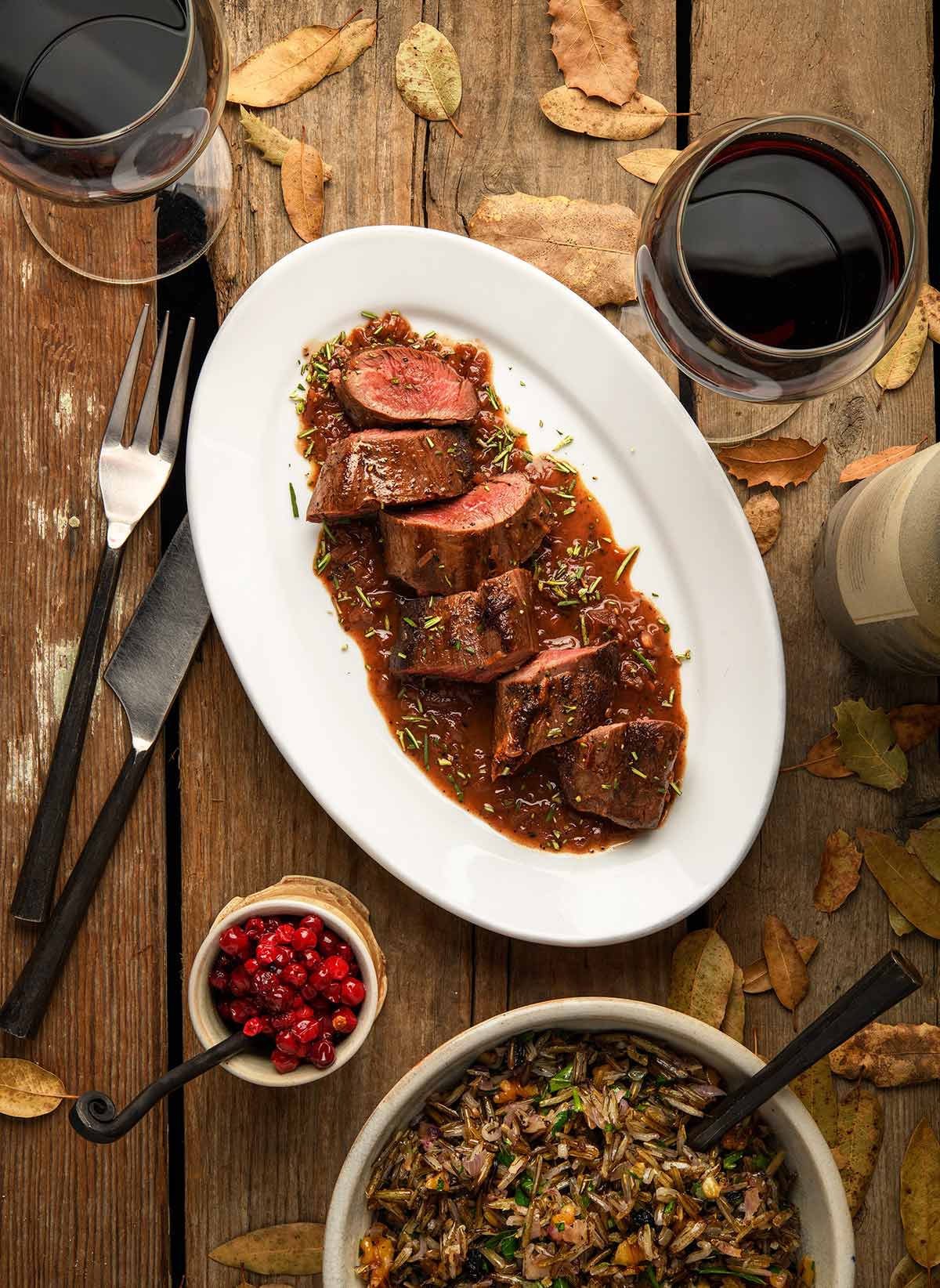
I need to start with the obvious: Venison tenderloin is not venison loin. Loins, a/k/a backstraps, are the deer (or moose, elk, pronghorn, etc.) equivalent of the ribeye in beef. They are great, but are not quite as tender, thus the name “tender” loin.
A deer tenderloin, or really any tenderloin, comes from the inside of the animal. Each animal has two, attached to the backbone underneath the backstrap, over the gut cavity. They often can be pulled off with minimal knifework.
I’ve seen venison tenderloins called the “fish,” breakfast loins, even “weenie” loins. Whatever you call them, they will always be soft, even when overcooked. This can confuse some cooks using the finger test for doneness, because a well done deer tenderloin will feel like it’s only medium.
This is why it’s better to pay attention to time and temperature.
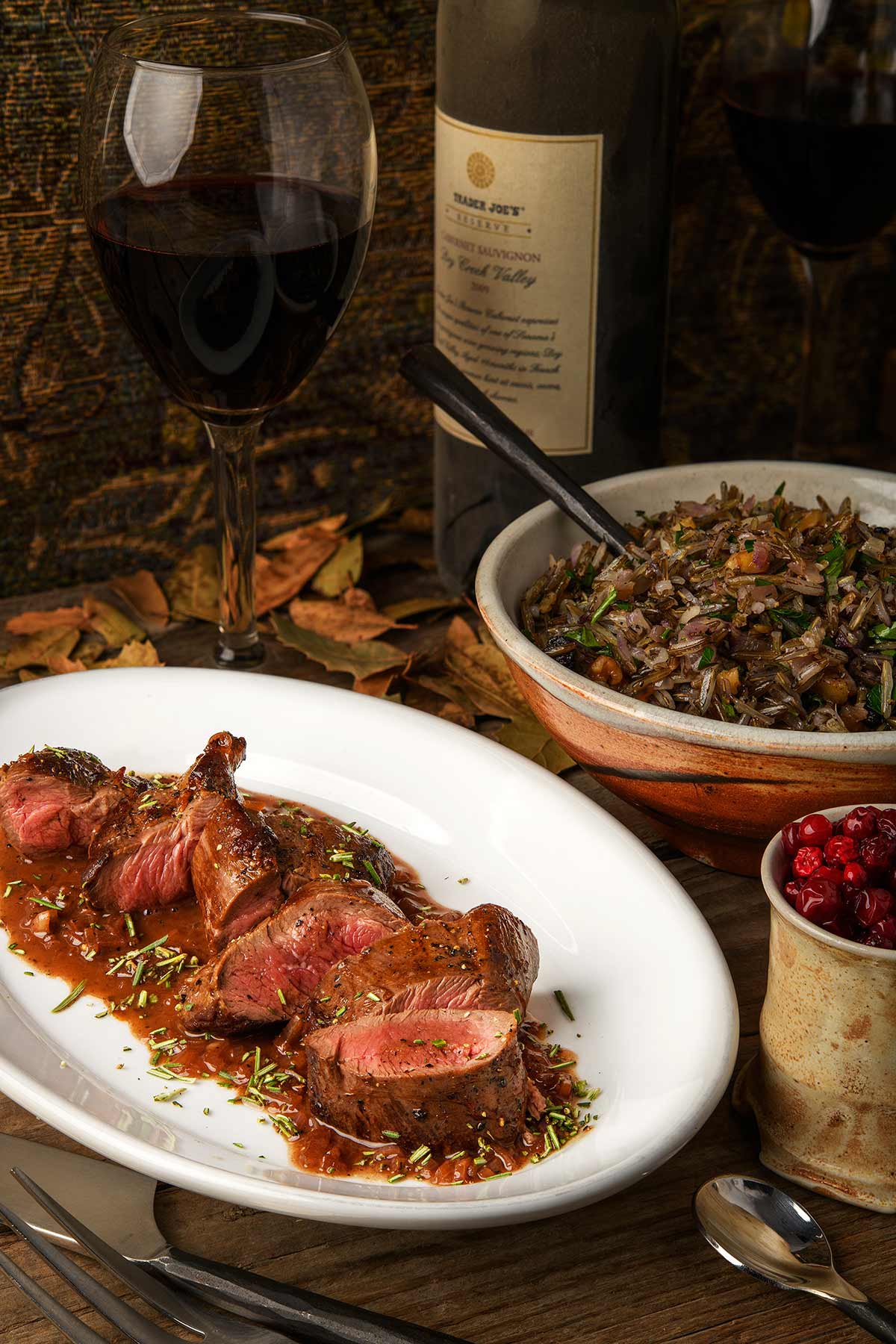
Keeping it Simple
A meal of venison tenderloin is ultra special, because the tenderloins even on a large deer will still only feed two. The ones in these pictures were from a 240-pound, mature buck. So you want to keep things simple. Deer tenderloin is a perfect date night meal.
First, salt thine loins. Salting beforehand is always good practice, but even moreso with steaks of any kind. I always take the meat out of the fridge, salt it well, and let it come to room temperature for at least 20 minutes, and an hour is not out of the question.
This seasons the meat — the salt will penetrate — remove a little moisture, concentrating flavor, and is an extra food safety step for meat sitting around at room temperature.
You will want only a little bit of a high smoke point oil to pan sear your venison tenderloin: Too much oil or fat limits the sear. I use about 2 tablespoons of grapeseed, avocado, safflower or canola oil for this.
Timing matters, because, remember, a deer tenderloin is soft. Once the meat is at room temperature and your oil is ripping hot, it should only require about 6 minutes to sear a venison tenderloin — they tend to be kinda-sorta triangular in cross section, so I end up searing 2 minutes on each major side.
Move the meat to a cutting board, grind a whole lot of black pepper over it, and let it rest 5 to 8 minutes. This is when you make your pan sauce.
Venison Tenderloin Sauces
I’ll give you a very simple pan sauce below, but there are many pan sauces on this site that go very well with venison tenderloin… or backstrap, for that matter.
They all need to be quick, because you don’t rest a deer tenderloin very long. My favorites include:
- Steak Diane, a zippy sauce of mustard, Worcestershire sauce, demi-glace, cream and shallots. The date night classic.
- Cumberland sauce, which uses red currants and red wine or Port. Also a legendary pan sauce.
- French au poivre sauce. I love this creamy green peppercorn sauce.
- A Scandinavian beer sauce I often do with duck.
- A barely sweet blueberry sauce that works very, very well with venison tenderloin.
You can also do “pan sauce jazz” by mixing and matching. You need the remaining fat in the pan, or add enough to get to 2 tablespoons. Sauté some shallots or minced onions. Add red wine, brandy, beer or vermouth. Let this boil. Add venison stock or beef stock. Maybe a pinch of dried herbs. Let this boil down until bubbles are all over the pan.
Turn off the heat, and swirl in 2 tablespoons of butter, which will emulsify into a cohesive sauce. Doneski.
If you liked this recipe, please leave a ⭐️⭐️⭐️⭐️⭐️ rating and a comment below; I’d love to hear how everything went. If you’re on Instagram, share a picture and tag me at huntgathercook.
Pan Seared Venison Tenderloin
Ingredients
- 12 ounces venison tenderloin (both tenderloins from a deer)
- Salt
- 2 tablespons safflower oil (see above for alternate oils)
- Freshly ground black pepper
PAN SAUCE
- 1 tablespoon safflower oil
- 1 shallot, minced
- Salt
- 1/2 cup red wine
- 1 cup venison or beef stock
- 2 tablespoon butter, divided
Instructions
- Salt the meat well and set aside while you mince the shallot for the pan sauce, or make whatever side dishes you have planned.
- When you are ready to cook the tenderloins, heat the safflower oil in a pan that will hold the meat — remember they contract when they hit the heat — over high heat. Turn your stove fan on and pat the meat dry with paper towels.
- Set the tenderloins down in the pan. They will contract immediately. Let them sear hard for 2 minutes, then turn to another side of the meat. Do this once or twice more, depending on how done you like your tenderloin. It's OK to sear a side more than once if you need to. Move the meat to a cutting board and grind black pepper over it.
- Add the extra safflower oil to the pan, then the shallots, and sauté until the shallots brown a little. Use a wooden spoon to move the shallots over any browned bits in the pan to lift them off the metal.
- Add the red wine and let this boil for a few seconds, then add the stock. Sprinkle a little salt over boiling sauce. Let this boil down for a few minutes, until the whole surface of the pan is covered in bubbles, and the wooden spoon leaves a trail when dragged through the center of the pan. Turn off the heat.
- Swirl in 1 tablespoon of the butter until it incorporates, then the other. Slice the venison into medallions and pour over the sauce. Serve at once.
Notes
Nutrition
Nutrition information is automatically calculated, so should only be used as an approximation.
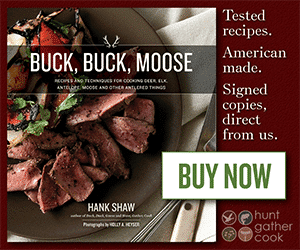

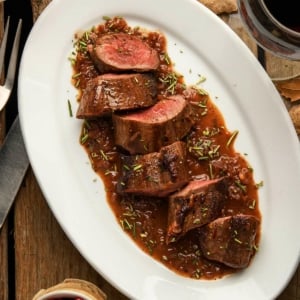
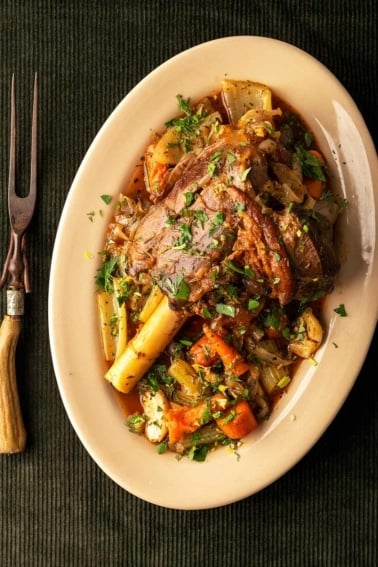
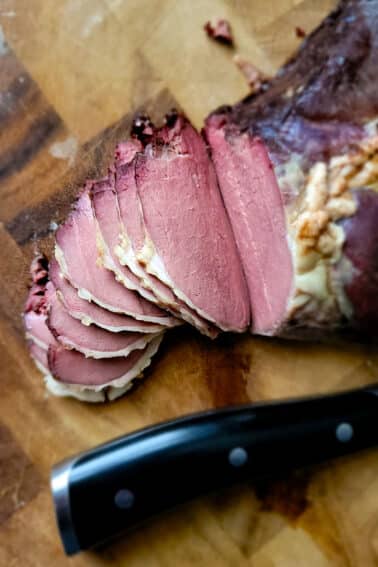
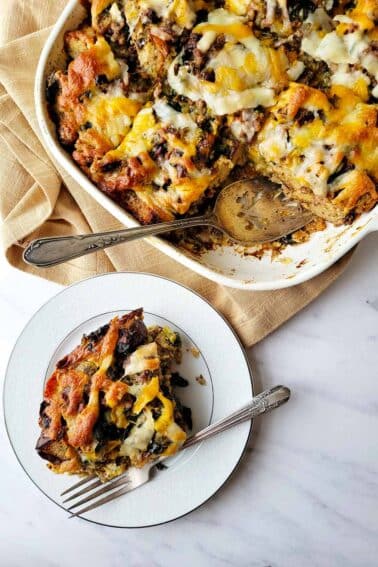
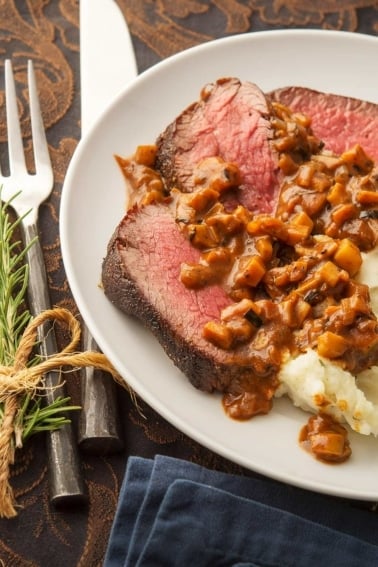
Damn good recipe will definitely use again!
I’ve made this dish 3x now and every single time my family devoured it. From our 21 month old daughter to my avid hunter husband. It’s always a hit. I can’t recommend enough. My husband quoted it as “the best sauce to accompany any red meat he’s ever had”. Thank you, endlessly.
It was absolutely amazing. I loved the broth / wine reduction and served it with a cheesy polenta.
Hank’s advice led me to make a sauce of lingonberry and crushed juniper berry – perfect tenderloin with the taste of the forest…
This was absolutely glorious! We were blessed with the gift of meats this Christmas and I did not want to mess these tenderloins up. Followed your recipe and voila! I think I’ll be dreaming of this for awhile. I added sliced and sauteed crimini to my portion of the sauce at the very end. (rest of the family was horrified ?) Thank-you for the perfect and easy to follow recipe.
Delicious! I used pecan oil and a regular onion instead of a shallot, but this came out great!
Thank you for this recipe. It will be used for a dinner for my son and I (our wives won’t eat venison, their loss).
I think it would also be good with scrambled eggs and home fries for an awesome steak and eggs breakfast, for me anyway!
Can’t wait to make it.
Excellent recipe with the red wine sauce.
Straightforward – like Hank, I suspect!
This was really delicious!
Couldn’t get any better! All 3 of us loved it. Super easy and tastes great. Thanks
I just bought your book Buck, Buck, due to receiving a load of Venison from my nephew. my late husband was a bow hunter, and we enjoyed having venison often, When I lost him, I never thought I would need the venison recipes again. Now that my 11 yr. old niece got her first doe, I think we’ll be enjoying it more often. I found your website looking for recipes and ended up buying the book for my nephew, but had to peek at the book before I handed it over ( I’m ashamed) but I really enjoyed it, and I’ve already made the one with the onions and mushrooms ( WONDERFUL) !! Now that I’ve received my demi-glace (Amazon) Ill be making the Cumberland Sauce. Next will be the Morel Sauce, once my friend gets me some fresh ones (he said they are growing right in the park in back of my house (can’t wait ) Thank you for your recipes, and the book is just what every hunter needs. You inspire me, and I’m almost 80. Happy Hunting ( and eating ) !!!
Spectacular!! ???? Easy, delicious and full of flavor. 10/10 I do recommend you try this!